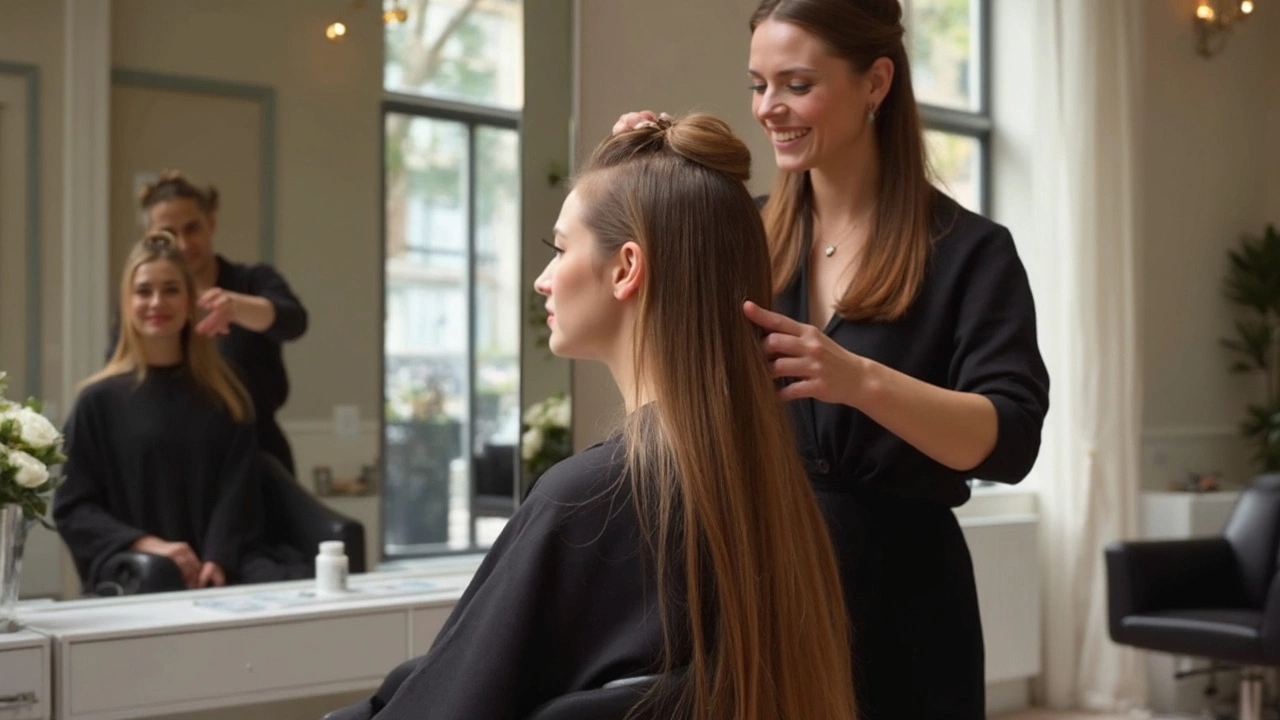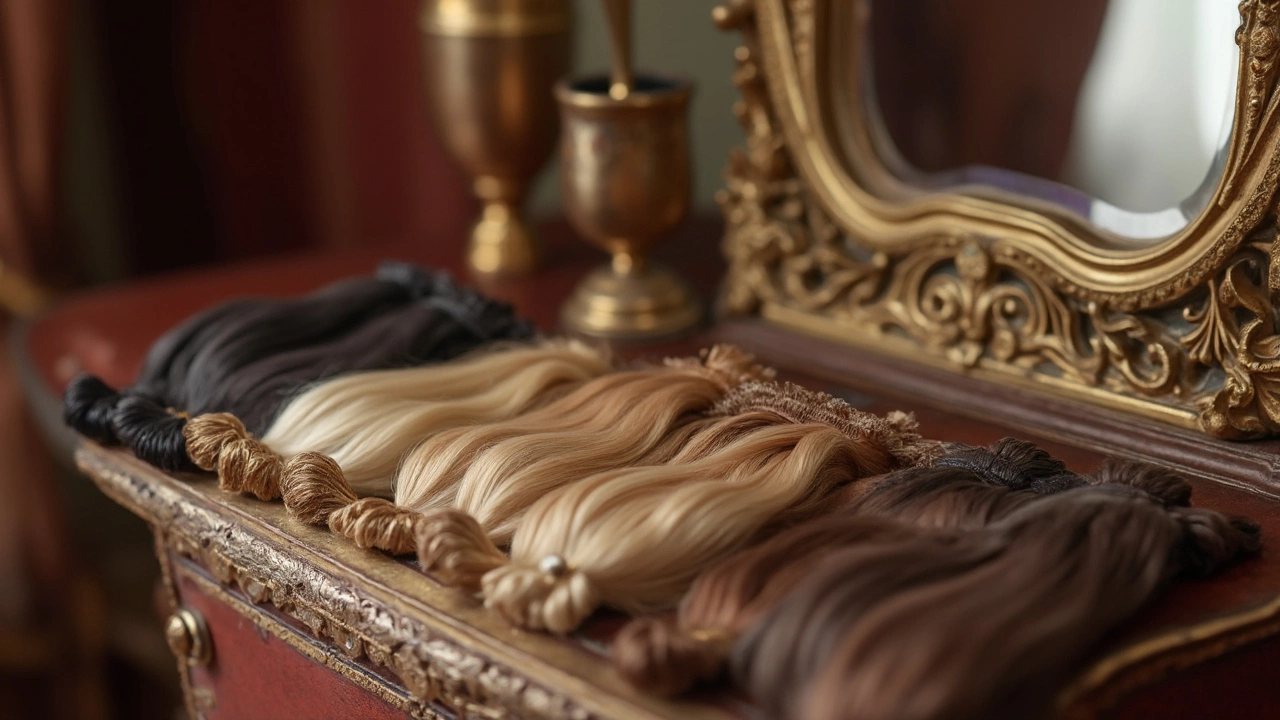
Ever wondered how long those gorgeous hair extensions you've been eyeing will actually last? It’s not just about adding length and volume; understanding their longevity can be a game-changer for your hair game. Different types of hair extensions have varied lifespans, and how well you take care of them makes all the difference.
The most common types—clip-ins, tape-ins, and sew-ins—each have their own average lifespan. Clip-ins can last anywhere from three to six months, sometimes even a year, if you're good at keeping them clean and dry. Tape-ins usually stick around for six to ten weeks before they need a refresh. Sew-ins are the marathon runners here, lasting between six to eight weeks before needing a redo.
- Different Types of Hair Extensions
- Factors Affecting Longevity
- Tips to Prolong Lifespan
- When to Replace Extensions
Different Types of Hair Extensions
Jumping into the world of hair extensions? You’ll find that there are several types you can choose from, each with their own quirks and lifespan. Let's break down the popular ones so you know what you’re getting into.
Clip-In Extensions
These are the ultimate in temporary options. If you want something you can put in for the weekend and take out for work, this is your go-to. Clip-ins are super easy to apply and can last anywhere from three to six months or even up to a year with proper care. Just remember, since they clip on, it’s important to be gentle or you might pull at your natural hair.
Tape-In Extensions
Think of these as the semi-permanent choice. Tape-ins are popular because they lie flat against your head and are ideal for those who want their extensions to look seamless. They typically last six to ten weeks before needing a reapplication. Pro tip: Avoid oil-based products near the tapes to prevent them from slipping.
Sew-In Extensions
Now we're talking long-term. Sew-ins, also known as weaves, involve braiding your natural hair and sewing the extensions onto these braids. They’re a great option if you're looking for something that’s going to stay put, usually lasting six to eight weeks. They require a bit more time and effort to install and remove, but they’re perfect for anyone who’s all about that dedication to the hair cause.
Micro-Link Extensions
These are also known as micro-beads or micro-rings. They involve attaching small sections of hair extensions to small strands of your own hair with a tiny bead. Micro-links can last several months but require maintenance every few weeks to move the beads closer to your scalp as your hair grows.
Whether you're dabbling in extensions for a special occasion or ready for a long-haul commitment, knowing the ins and outs of these hair extensions types helps you make the best choice for your lifestyle. Each type has its rhythm, so you're bound to find one that fits right in with your routine.
Factors Affecting Longevity
When it comes to keeping your hair extensions looking fabulous for as long as possible, several factors come into play. Not all extensions are created equal, so understanding these aspects can really help you maximize their lifespan.
Hair Quality
First off, it all begins with the quality of the extensions themselves. Remy hair extensions, which are known for being high-quality, tend to last longer than synthetic counterparts. Remy is basically human hair collected in such a way that it maintains the natural direction of the cuticles, which means less tangling and more shine.
Installation Method
Who installs your extensions matters. A professional stylist ensures a tight fit with minimal strain on your natural hair. Improper installations can lead to damage and a quicker end to your extension's life.
Day-to-Day Care
How you care for your extensions daily is crucial. Washing technique, heat styling, and even how you sleep can all influence how long they stick around. Always use sulfate-free shampoos and conditioners to protect the integrity of the extensions. And if you love heat styling, invest in a good heat protectant spray!
Frequency of Use
If you’re rocking clip-ins, for instance, giving them a break every now and then can help. Frequent use without giving them occasional rests might shorten their lifespan.
Lifestyle
Lastly, your lifestyle choices, like how often you work out or swim, can also play a role. Chlorine and saltwater are not exactly hair-friendly, so wearing a swim cap or rinsing your hair immediately afterward can make a difference.
Understanding these factors helps you not just to extend the life of your extensions but also to keep both them and your natural hair healthy. So, give your extensions a little extra love—they’ll reward you with longer use and better looks!

Tips to Prolong Lifespan
Want those extensions to last as long as possible? It’s all about the care. The first thing to know is that gentle handling is key. Treat them like you would your natural hair—or even better!
Brush With Care
Start with using a soft-bristle brush. Slowly work from the ends upwards, which prevents tugging and reduces breakage. Remember, patience is your best friend here.
Shampooing and Conditioning
When it comes to washing, choose a sulfate-free shampoo. This helps maintain the binding substance of the extensions. Condition just like your own hair, but avoid the roots to prevent them from loosening.
Drying the Right Way
Though air drying is the gentlest method, if you’re using a blow dryer, set it on low heat. Excessive heat can be damaging, just like with natural hair.
"Hair extensions need as much care as your natural hair, sometimes more, to retain their beauty," advises renowned stylist Shelly Monroe.
Protect Them While Sleeping
Tie them up in a loose braid or bun before bed to prevent tangling. A silk or satin pillowcase can also minimize friction while you toss and turn.
Limit Heat Styling
While you might love those curls or that sleek finish, heat styling should be kept to a minimum. Try heat-free methods like rollers or braids for curls.
If you follow these tips, your hair extensions can stay looking fresh and fabulous for longer, saving you both time and money in the salon chair!
When to Replace Extensions
Let's face it—hair extensions can’t last forever, no matter how well you care for them. But how do you know when it's really time to get them replaced? Spotting signs of wear and tear is a great starting point.
Signs It's Time to Replace
If you notice your hair extensions aren't blending smoothly anymore, or they're feeling rough and dull, that's a big clue. Tangles and persistent matting are reds flags as well. Another hint? When the extensions start to come loose more often or your hair doesn’t seem as full as it used to—it might be time.
“Extensions can enhance your look, but maintaining their quality is key,” says Jenna Styles, a renowned hairstylist. “Pay attention to the texture and attachment points. Neglect these, and you're in for some hair mishaps.”
Regular Check-Ins
It's smart to have regular check-ins with your stylist to assess the state of your extensions. They can give you the lowdown on whether a simple retouch is sufficient or a replacement is needed.
Overall Longevity
For a quick cheat sheet: Clip-ins need a refresh after six months if human hair and well cared for; synthetic ones, a bit sooner. Tape-ins usually have a lifespan of six to eight weeks per application, but the hair itself might last longer with proper maintenance. Sew-ins typically require a redo every eight weeks.
Know Your Options
Replacing doesn't always mean starting from scratch. Sometimes, reusing the hair and getting new attachment methods can be a budget-friendly solution. Discuss your options with a hair professional to make a plan that's best for you.
Remember, replacing extensions at the right time keeps not just your hair looking awesome but also maintains scalp health, minimizing damage.